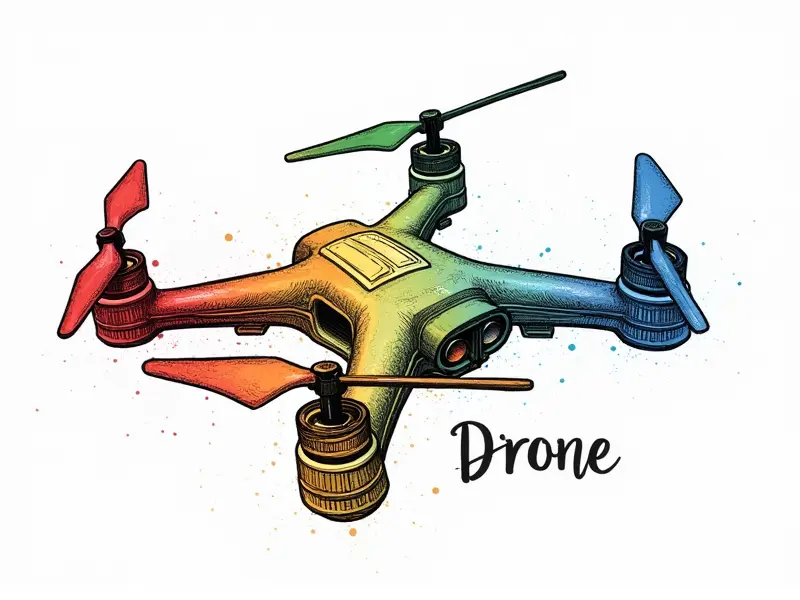Quadcopter frame material?

Quadcopter Frame Material: Choosing the Right Option for Your Drone
When it comes to building or purchasing a high-performance quadcopter, one of the most crucial decisions you'll make is choosing the right frame material. The choice of materials can significantly impact your drone's flight performance, durability, and overall cost. This article delves into various options available for quadcopter frames, helping you make an informed decision.
Best Materials for Quadcopter Frames
The ideal quadcopter frame material should offer a balance between strength, weight, and affordability. Common materials include aluminum, carbon fiber, plastic, and composites like fiberglass or Kevlar. Each has its unique advantages and disadvantages, catering to different needs and budgets.
Aluminum vs Carbon Fiber Frames
Aluminum: Aluminum frames are popular for their affordability and ease of manufacturing. They provide a good balance between strength and weight, making them suitable for both beginners and intermediate users. However, aluminum can be prone to corrosion in humid environments.
Carbon Fiber: Carbon fiber is the go-to material for high-end quadcopters due to its exceptional strength-to-weight ratio and durability. It offers superior rigidity, which enhances flight stability and responsiveness. Despite being more expensive than aluminum, carbon fiber frames are highly resistant to corrosion and impact.
Lightweight Quadcopter Frame Options
For pilots seeking the lightest possible frame without compromising on strength, options like carbon fiber or composite materials are ideal. These lightweight materials allow for better thrust-to-weight ratios, improving flight time and maneuverability. However, they often come with a higher price tag.
Impact of Material on Flight Performance
The material used in your quadcopter frame directly affects its aerodynamics and stability during flight. Lighter frames reduce the overall weight of the drone, leading to improved acceleration and agility. Additionally, materials like carbon fiber provide better vibration dampening, contributing to smoother flights.
Durability in Different Weather Conditions
Quadcopters are often used outdoors where they may encounter various weather conditions such as rain or extreme temperatures. Materials like aluminum and carbon fiber offer excellent resistance against corrosion and temperature fluctuations, ensuring reliable performance even under harsh environmental conditions.
Budget-Friendly Frame Material Choices
If cost is a primary concern, aluminum frames are an affordable option that still delivers decent performance. They are widely available and can be easily customized or repaired if damaged. However, they may not match the durability of carbon fiber in long-term use.
Pros and Cons of Plastic Frames
Pros: Lightweight and inexpensive; easy to manufacture.
Cons: Lower strength compared to metals or composites; more susceptible to damage from impacts or rough handling.
Longevity of Quadcopter Frame Materials
The longevity of your quadcopter frame depends largely on the material's resistance to wear and tear. Carbon fiber frames, for example, are known for their long-lasting nature due to high tensile strength and low susceptibility to corrosion or fatigue.
Metal vs Composite Quadcopter Frames
Metals (Aluminum): Durable but heavier; prone to corrosion.
Composites (Carbon Fiber, Kevlar): Extremely lightweight and strong; more expensive but highly durable.
Heat Management in Quadcopter Frames
Effective heat management is crucial for maintaining optimal performance during prolonged flights. Materials with high thermal conductivity like aluminum help dissipate heat quickly, preventing overheating issues that could affect motor efficiency or battery life.
Optimal Frame Material for Beginners
Beginners often benefit from learning on more forgiving materials such as plastic or lightweight aluminum frames. These options are less expensive and easier to repair if damaged during the learning phase. Once you gain experience, transitioning to carbon fiber can offer enhanced performance.
Conclusion
Selecting the right material for your quadcopter frame is a critical decision that influences its overall performance, durability, and cost-effectiveness. Whether you choose aluminum for affordability, carbon fiber for high-end performance, or plastic for ease of use as a beginner, understanding the pros and cons of each option will help you make an informed choice tailored to your specific needs.

